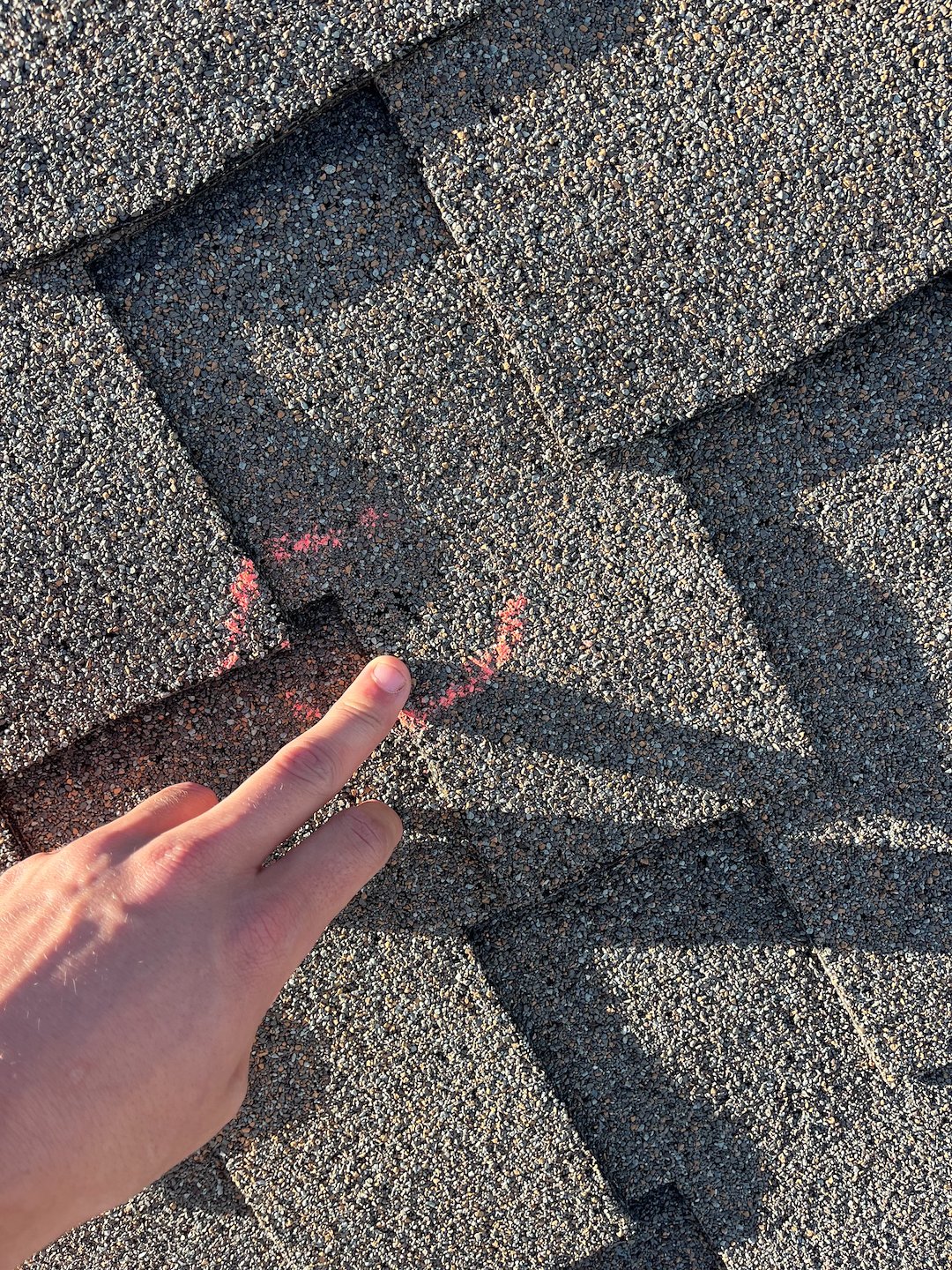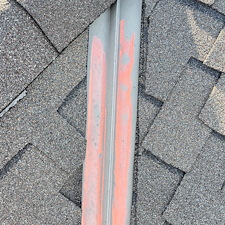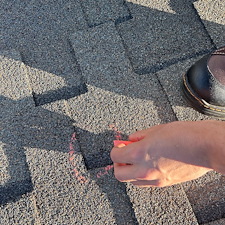Got Hail Damage? Contact Corner House Roofing Today!
November 7, 2024

Understanding Roof Hail Damage: Causes, Signs, and Solutions
Hailstorms are a common natural phenomenon, and while they may seem like a mere inconvenience, they can cause significant damage to homes, especially to the roof. The severity of the damage depends on the size of the hailstones, the wind speed, and the roofing material, among other factors. Roof hail damage is often insidious, sometimes going unnoticed until it results in leaks or more serious structural issues. Understanding the causes, signs, and solutions to roof hail damage is essential for homeowners to protect their property and avoid costly repairs.
What is Roof Hail Damage?
Roof hail damage occurs when hailstones — chunks of ice formed in thunderstorms — strike your roof with sufficient force to cause dents, cracks, punctures, or other forms of degradation. Hailstones vary in size, from tiny pellets to large chunks, and when they hit the roof, they can cause immediate damage or weaken the roof’s protective layers over time, leading to leaks and water infiltration.
While the damage may seem minimal at first, hail can compromise the integrity of the roof, leading to bigger issues if not addressed. This is why regular roof inspections after a hailstorm are recommended, especially in regions prone to such weather events.
How Hailstorms Cause Roof Damage
Several factors contribute to the extent of roof damage caused by hail:
Hail Size and Impact Force:
The larger the hailstone, the more damage it can cause. Hailstones can range from pea-sized (around 0.5 inches) to grapefruit-sized (over 4 inches in diameter). Larger hailstones create more significant dents, cracks, and punctures. Additionally, the faster the hail falls (driven by strong winds), the more forceful the impact.
Roofing Material:
Different roofing materials have varying levels of resilience against hail. Asphalt shingles, for example, are more vulnerable to hail than metal or tile roofs. The granules on asphalt shingles can be knocked off, leading to reduced protection against the sun's UV rays. Metal roofs may dent, but they're less likely to suffer the same type of long-term damage. The age and condition of the roofing material also play a crucial role. Older shingles, which are already weathered, tend to be more susceptible to damage.
Storm Intensity:
The duration and intensity of the storm also affect the amount of damage. Prolonged hailstorms or storms with heavy, sustained winds are more likely to cause significant roof damage than a short, light hail event.
Roof Slope and Elevation:
Roofs with steeper slopes may be more susceptible to hail damage, as hailstones may strike at more direct angles. Similarly, homes located at higher elevations or in areas prone to severe storms are more likely to experience significant hail damage.
Signs of Hail Damage on Your Roof
Roof hail damage is not always immediately obvious, especially from the ground. However, there are several signs homeowners can look for to determine if their roof has been affected:
Visible Dents or Cracks in the Roof Surface:
Inspect your roof for visible dents, cracks, or holes, especially if you have asphalt shingles. If the hail was large enough, it could leave divots on the shingles, some of which may go unnoticed from the ground.
Granule Loss on Asphalt Shingles:
One of the most common signs of hail damage on asphalt shingles is the loss of granules, which are the tiny, sand-like particles that cover the shingles. If large patches of granules are missing, it could indicate that hailstones have struck the roof, damaging the shingles and exposing them to further wear from the sun and rain.
Punctured Roof Membranes:
For flat roofs or roofs with synthetic membranes, hail can puncture or tear the membrane, allowing water to seep through and potentially cause leaks. This type of damage is particularly problematic for commercial or low-slope residential roofs.
Dented Flashing and Gutters:
Check for damage to the roof’s flashing, the metal strips around chimneys, vents, and skylights. Hail can dent or even tear flashing, creating weak spots in the roof that may result in water damage. Gutters and downspouts may also show signs of impact from hail.
Interior Water Damage:
In some cases, the damage may not be apparent from the outside. If you notice water stains on the ceiling or walls inside your home after a hailstorm, it may be an indication that hail has caused damage to your roof, leading to leaks. It’s important to address these issues quickly to avoid mold or structural problems.
How to Inspect for Roof Hail Damage
While it’s always a good idea to hire a professional to conduct a detailed roof inspection after a hailstorm, homeowners can do some preliminary checks to identify potential damage. Here are a few steps:
Conduct a Visual Inspection from the Ground:
Look at the roof from the ground using binoculars. Inspect areas that are more likely to be damaged, such as the top ridges and areas that face the prevailing winds. If you notice any visible indentations, cracks, or missing shingles, it’s a red flag.
Examine Your Gutters and Downspouts:
Hail damage may show up in the form of dents or pieces of shingles in your gutters. Check for any debris or granules that may have washed off the roof.
Look for Water Leaks Inside:
If you notice water stains, peeling paint, or wet spots on your ceiling or walls, this may suggest roof damage that is allowing water to seep in.
Hire a Professional Inspector:
For a thorough inspection, it’s best to hire a professional roofing contractor. These experts have the knowledge and tools to assess the extent of hail damage and provide recommendations for repairs.
Repairing Roof Hail Damage
If hail damage is detected, it’s crucial to take action as soon as possible to prevent further deterioration. Here are the common approaches for repairing hail damage:
Minor Damage (Dents and Granule Loss):
Small dents or granule loss on asphalt shingles may not require complete replacement. Often, these can be repaired by replacing the affected shingles or applying a coating to prevent further damage.
Major Damage (Punctures and Cracks):
If large cracks or punctures are found, the affected shingles may need to be replaced entirely. For more significant damage, the underlying roof structure might need to be inspected for any structural issues.
Complete Roof Replacement:
In cases of severe damage, such as widespread punctures, torn membranes, or extensive granule loss, replacing the entire roof may be the best solution. A professional roofing contractor can help assess whether repair or replacement is the most cost-effective choice.
Conclusion
Roof hail damage is a serious concern for homeowners, particularly in regions prone to severe storms. Recognizing the signs of damage early can help prevent more extensive problems in the future. Regular roof inspections, especially after hailstorms, can ensure that your roof remains in good condition and protect your home from leaks and water damage. Whether you need minor repairs or a complete roof replacement, addressing hail damage quickly is essential to maintaining the structural integrity and safety of your home. If you suspect hail damage, don’t hesitate to contact a professional roofer to assess and address the issue.
Location: Overland Park, KS
Project Image Gallery
Your Roof, Our PriorityContact Our Overland Park Roofers Today!




